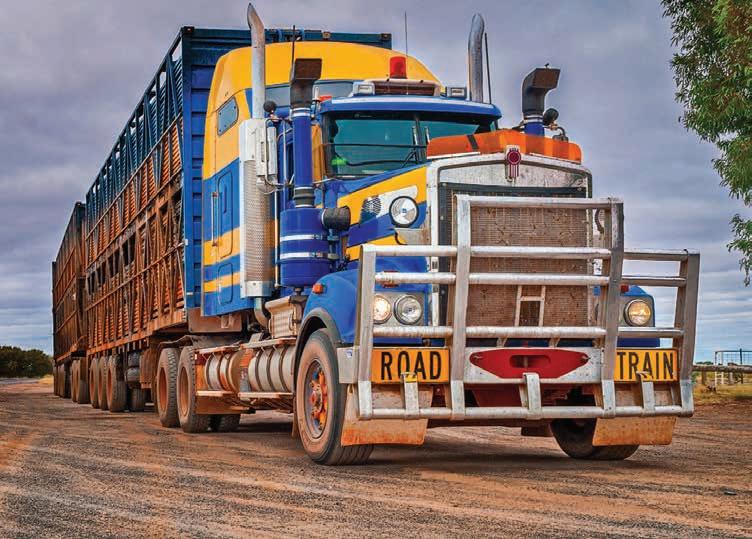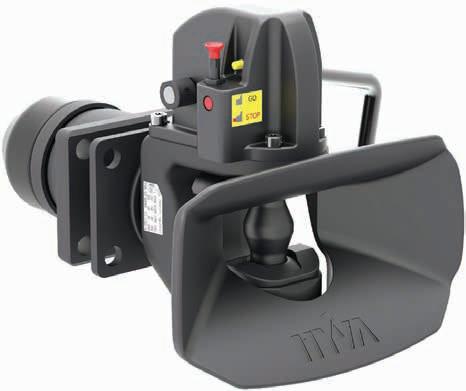
5 minute read
Is mass immigration the solution to Australia’s skills shortages?
Following the disruptions of Covid-19, Australia is seeing a period of changing demographics in workforces across the country. With a large reduction in immigrant workers, a wave of skills shortages has also reached Australian borders.
The Australian Council of Trade Unions (ACTU) released its Skilling the Nation: Addressing Australia’s skills and migration needs now and into the future report earlier last year, which criticised the former Coalition Government’s lack of management between skilled migration and the Vocational Education and Training (VET) system.
ACTU explained that during the Covid pandemic approximately 500,000 temporary migrant workers left Australia. Now that the country is rebuilding its economy, many businesses are claiming an urgent need for gaps in the workforce to be filled by short-term migrant numbers.
The report called for the reinvigoration of Australia’s TAFE by guaranteeing a minimum of 70 per cent public funding, as well as “repairing almost a decade of damage to our apprenticeship system”.
Following this, the 2022 Jobs & Skills Summit saw the Federal Government devise a clear plan which will aim to address skills shortages and strengthen the migration system. This includes its immediate actions, areas for further work, and complementary existing commitments.
Immediate actions
The Government will:
• I ncrease the permanent Migration Program planning level to 195,000 to help ease widespread, critical skills shortages
• Provide $36.1 million in additional funding to accelerate visa processing and resolve the visa backlog
• I ncrease the duration of post study work rights by allowing two additional years of stay for recent graduates with select degrees in areas of verified skills shortages to strengthen the pipeline of skilled labour in Australia, informed by advice from a working group
• E xtend the relaxation of work restrictions for student and training visa holders until 30 June 2023 to help ease skills and labour shortages
• W iden the remit of the National Housing Infrastructure Facility, making up to $575 million available to invest in social and affordable housing. The funding can be used to partner with other tiers of government and social housing providers, and to attract private capital including from superannuation funds

Areas for further work
The Government will conduct a review of the purpose, structure and objectives of Australia’s migration system to ensure it meets the challenges of the coming decade.
The Government will also progress work to:
• A ssess the effectiveness of the skilled migration occupation lists
• E xpand pathways to permanent residency for temporary skilled sponsored workers
• Raise the Temporary Skilled Migration Income Threshold (TSMIT) following broad engagement on equitably setting the threshold and pathway for adjustment
• Reform the current labour market testing process following consultation with unions and business
• B ring forward a package of reforms to address migration worker exploitation during 2023
• E xamine the potential for industry sponsorship of skilled migrants
• Embed a role for Jobs and Skills
Australia’s analysis of skill shortages in setting priorities of the skilled migration program
• Consider policies to address regional labour shortages and how to improve small business access to skilled migration All levels of government will work together to ensure infrastructure, housing and social services are wellplanned to meet the needs of a growing population
Complementary existing commitments
• I mplement the recommendations of the Migrant Workers’ Taskforce to tackle migrant worker exploitation
• Encourage more migration from our region by reforming the Pacific Australia
Labour Mobility scheme and creating a new Pacific engagement visa
• Under the one-year National Skills Agreement the Government is providing (unmatched) $50 million to modernise TAFE technology infrastructure and $24 million to support vulnerable students to be successful
According to ACTU, evidence suggests that although Australia’s borders have now reopened, migrant workers are not returning in large numbers. The reason, it said, is due to the poor treatment many migrant workers have experienced in Australia which has incurred significant reputational damage.
“This includes the lack of support for temporary migrants during the Covid-19 pandemic and the growing and systemic problem of migrant worker exploitation, both of which have damaged Australia’s international reputation and made us a less desirable destination for migrant workers,” the report read.
“In addition, the temporary nature of many visas, the visa processing backlog for skilled migrant workers, long wait times for applications for permanency and to bring family members to Australia has led to extensive delays and lives lived in limbo. All of this makes Australia a less attractive place to settle.”
ACTU dismissed the idea of an urgent need to restart temporary migration, labelling it as a “short-sighted outlook” that will not deliver the skills-based needed over the long term. Instead, it explained that the causes of the problem go much deeper, which include:
• The shift from an immigration system based on permanent migration, where previous generations of migrant workers brought their families and built lives in Australia, to a system based on temporary, employer-sponsored migration, where workers are on insecure short-term visas, in many cases tied to their employer
• A decade of stagnant wages
• A n overreliance by particular industries and employers, including the public sector, on migrant workers to fill skills gaps instead of investing in developing a local workforce
• A failure to address the structural issues that are driving local workers out of industries, such as low pay and insecure work
• A failure to develop career paths and develop workers to take on higherskilled roles within their industry
• The undervaluation of jobs traditionally done by women, for example jobs in the care economy
• Lack of industry planning and an adhoc approach to migration and skills development
• A decade of underfunding, cuts and marginalisation of TAFE, which has exacerbated skills gaps
• A lack of protection and a safety net for temporary migrant workers which leave them highly vulnerable to exploitation. Many industries and organisations believe mass immigration is the solution to fixing Australia’s skills shortages, while others say changing its current working conditions and increasing wellbeing in the workforce could accommodate the change in demographics.
Industry initiative, Healthy Heads in Trucks & Sheds, addressed the latter last November by making its information on looking after wellbeing more accessible and easily understood for different cultural groups working across the industry.
This involved launching its industrytailored wellbeing resources translated into eight of the most commonly spoken languages other than English in the Australian road transport, warehousing and logistics sector. The information included in all English as Second Language (EASeL) resources derives from the Healthy Heads Workforce Handbooks, which is now available in English, Hindi, Punjabi, Arabic, Filipino, Vietnamese, Mandarin, Cantonese and Sinhalese.
HHTS CEO, Naomi Frauenfelder, said stigma around mental health in this sector is a key risk factor and barrier for helpseeking.
“In developing this project, our ambition was the ensure that the information within the EASeL resources was not only more accessible from a language perspective, but, also through the simplicity of messaging,” she said.
“To achieve this, we created a set of positive messages, that call out some of the key actions we can take to keep our wellbeing in check, including exercise, eating well, getting good quality sleep, cleanliness and drinking water.”
The National Skills Commission’s 2022 Skills Priority List found shortages in 286 occupations in 2022, compared to 153 occupations in 2021. These included nurses, software programmers, aged care workers, construction managers and childcare workers.
The project was funded by the National Heavy Vehicle Regulator’s (NHVR) Heavy Vehicle Safety Initiative, in partnership with the Federal Government.

NHVR CEO, Sal Petroccitto, said providing greater access to mental health resources was particularly important as the transport industry approached the busiest time of the year.

“I am extremely pleased to see a dedicated project that focuses on inclusion and provides more people in the heavy vehicle industry with access to important information to help them maintain positive health and wellbeing,” he said.
“I encourage everyone in the sector to use the EASeL resources developed by HHTS and prioritise their mental health and wellbeing this holiday season.”
The National Skills Commission’s 2022 Skills Priority List found shortages in 286 occupations last year, compared to 153 occupations in 2021. These included nurses, software programmers, aged care workers, construction managers and child care workers. With the Federal Government’s initiatives backed by industries and organisations nation-wide, the 2023 Skills Priority List could show a very different figure this year.










